First Foods of America (1936)
McNeil, Blanche and Edna V. McNeil. First Foods of America. Los Angeles: Suttonhouse LTD., 1936. [TX725 .M374 1936]
First Foods of the Americas (1936) is one of the earliest English language cookbooks featuring Mexican cuisine in our collection. The maternal Grandmother of the authors was born in San Antonio, Texas, but moved as a baby with her family to Monterey in 1845, and later to the Isthmus of Tehuantepec. Although she returned to the United States as an adult, she “loved Mexico, and she taught her children and grandchildren to love it”(n.p.). According to the introduction, many of the recipes in First Foods of America are drawn from her handwritten collection, while others come from a variety of other home and professional cooks.
The authors note that due to the limited availability of certain ingredients in the United States, they have “tried to choose only those that are practical for use in our country. When rare ingredients are called for, we have suggested substitutes that in no way impair the final result.” The authors emphasize the connection between contemporary Mexican recipes and pre-contact cooking, perhaps even overstating a tiny bit when they way, “Out of cans and bottles, American house-wives can now make the same fine dishes that the copper-colored Aztec chefs cooked in their vari-colored earthenware bowls”(13). Some of the key ingredients they list as evidence of continuity are corn, beans, chocolate, chiles, maguey, and cactus, and several follow each ingredient, providing historical and culinary context. There is also a section titled “Aztec Foods in the Modern Manner” that explains how to make masa from canned hominy, and how to use the dough to prepare tortillas and tamales.
The section “Mexican Meals” describes the five times of food service traditional in middle and upper class Mexican families: the hearty Almuerzo (breakfast) between 9-11am; Comida (Dinner), the largest meal of the day served around mid-day; Merienda, a light snack of chocolate or coffee and cakes, sometimes supplemented by tamales, enchiladas, pasteles, and chalupas; and Cena (Supper), served around 8pm and usually including soup, meat or fish, beans, tortillas, and dessert, accompanied by coffee or wine. The introductory materials wrap up with a list of suggested menus for dinners and luncheons using recipes from First Foods of the Americas. The following is one described as “patterned after meals as served in Mexico:”
- Caldo de Habas (Lima Bean Soup)
- Tajada de Halibut con Salsa (Halibut Steak with Sauce)
- Gallina con Chile y Frijoles (Chicken with Chile and Beans)
- Tomates Rellenos (Stuffed Tomatoes)
- Berejena (Eggplant)
- Enchiladas en Salsa Verde (Enchiladas in Green Sauce)
- Tortillas (Tortillas)
- Ensalada de Combinacion (Combination Salad)
- Frutas (Fruit)
- Nueces Descortezadas (Shelled Pecans)
- Café o Chocolate (Coffee or chocolate)
The authors also provide “less elaborate menus [that] will probably appeal more to American hostesses,” such as the following:
- Caldo Ranchero (Ranchers’ Soup)
- Jitamates Rellenos (Stuffed Green Tomatoes)
- Guisote de Carnero (Lamb Country Style)
- Tamales (Tamales)
- Habas Cariocas (Limas Cariocas)
- Col Rellena (Stuffed Cabbage)
- Tortillas (Tortillas)
- Repostería (Cookies)
- Café (Coffee)
- Frutas (Fruits)
Librarian’s Note: In my experience of Spanish-language Mexican cookbooks, “jitomate” generally refers to red tomatoes, but in this instance the authors explicitly translate it as green tomatoes. Likewise, I’ve always understood “repostería” to be a more general term for confectionary, but the authors specifically use it here to mean cookies.
I confess that I have difficulty seeing a menu that includes two kinds of stuffed vegetables and tamales as anything but elaborate (I certainly won’t be attempting either of these for a dinner party in the near future) but perhaps the authors considered the second menu simpler because it lacks a fish course, and because it does not require shelling pecans.
The recipes themselves are organized into several chapters: Antojitos (Little Whimsical Dishes); Sopas y Caldos (Soups and Broths); Pan (Bread); Huevos (Eggs); Pescados (Fish); Guisados de Carne y Asados (Meats); Guisados de Aves (Fowls); Verduras (Vegetables); Ensaladas (Salads); Salsas (Sauces); Postres (Desserts); and Bebidas (Drinks), each accompanied by a few introductory paragraphs. At the end of First Foods of the Americas the McNeils offer a chapter of Mexican Songs of Foods; a pronunciation guide for key culinary terms such as atole, carne, dulce, huevos, etc.; and a complete list of recipes by chapter.

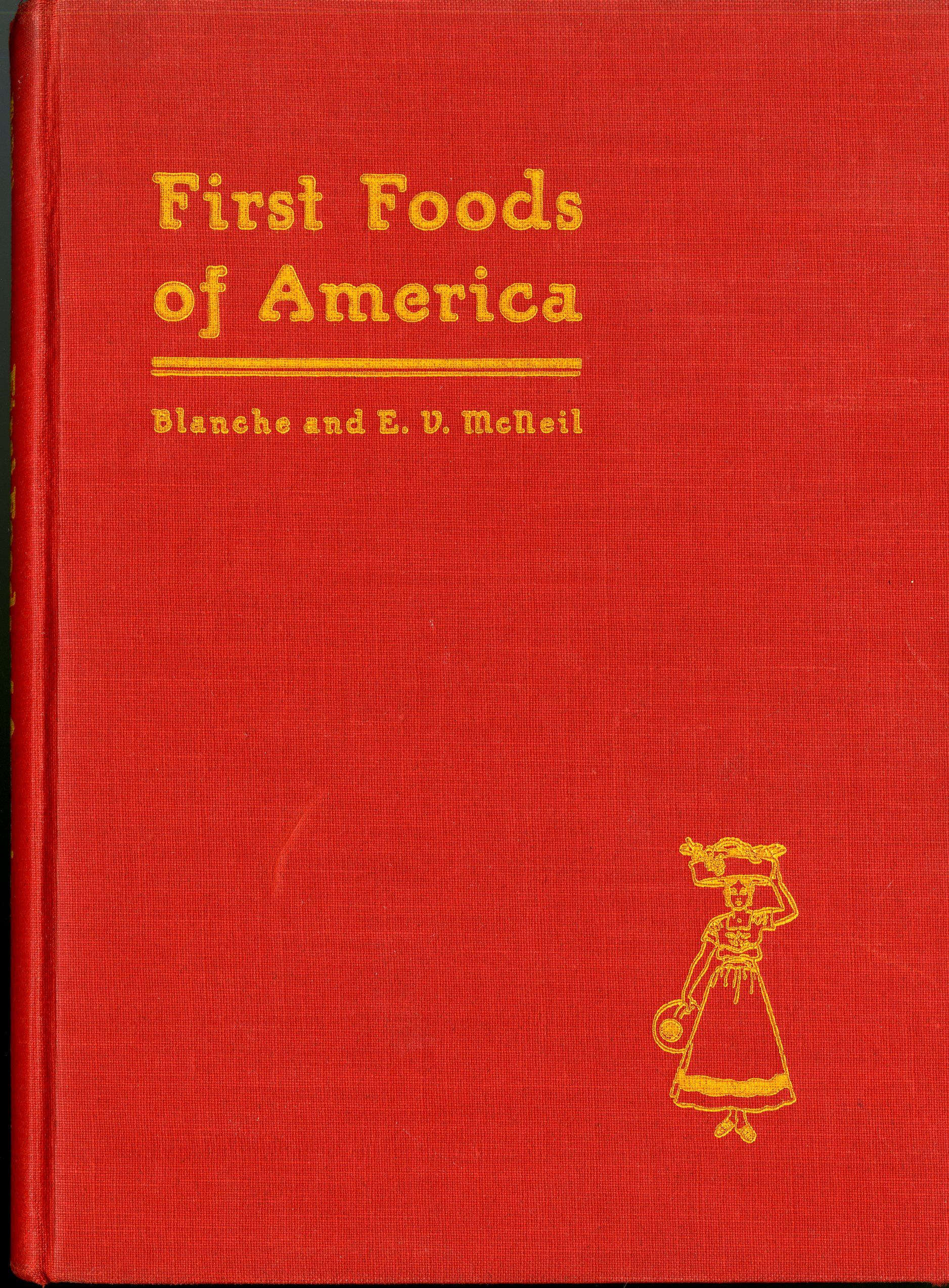
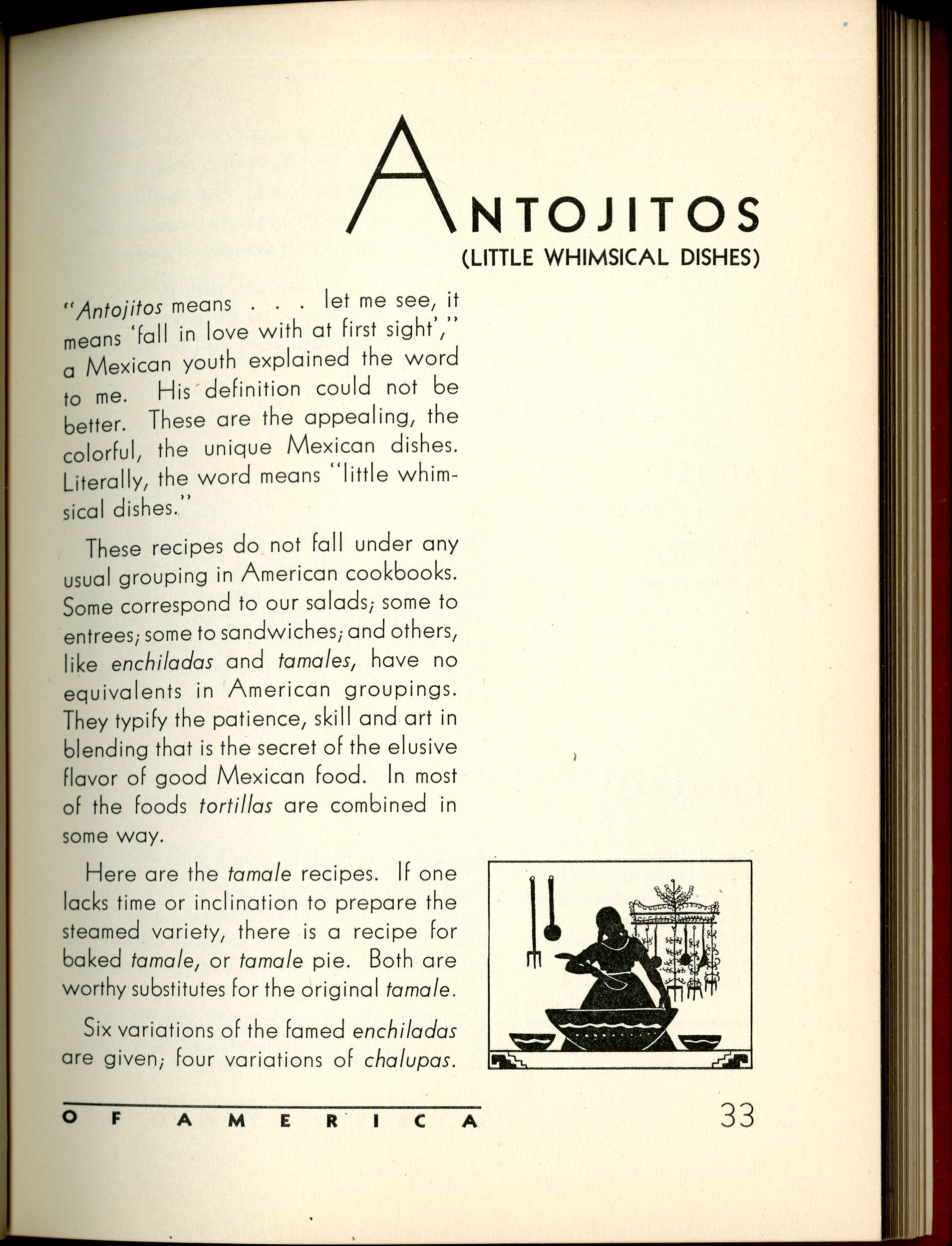
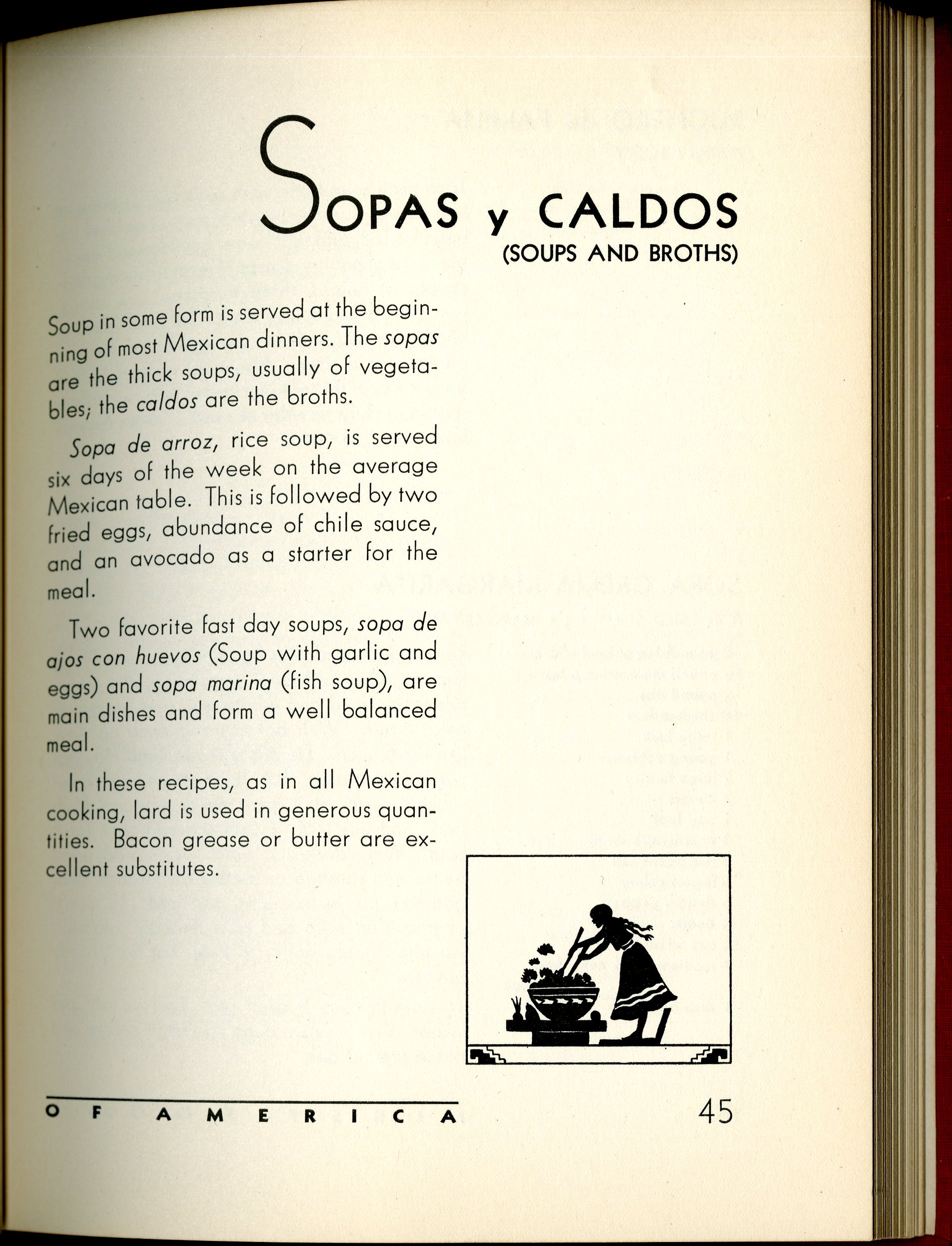

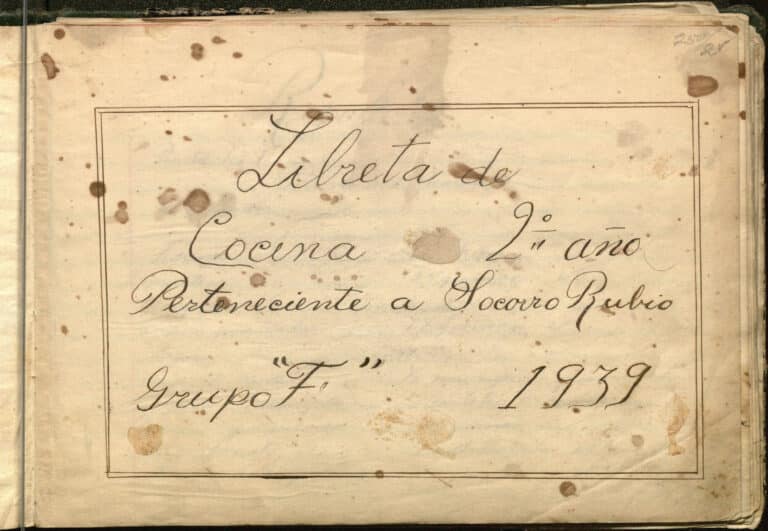
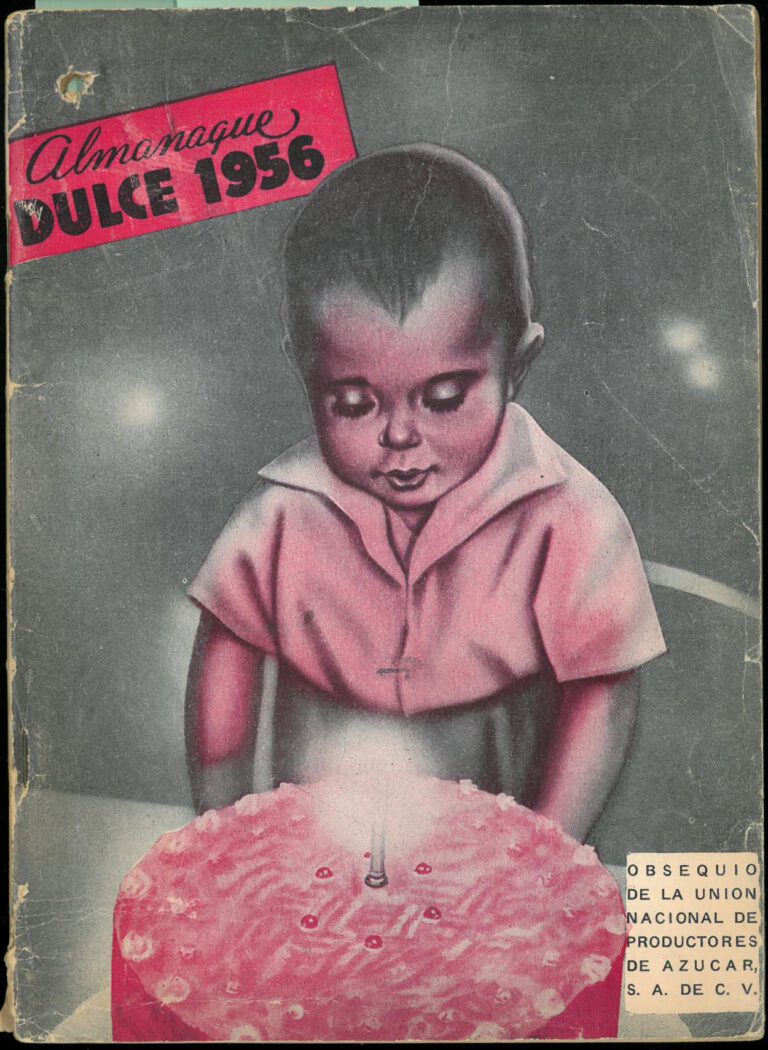
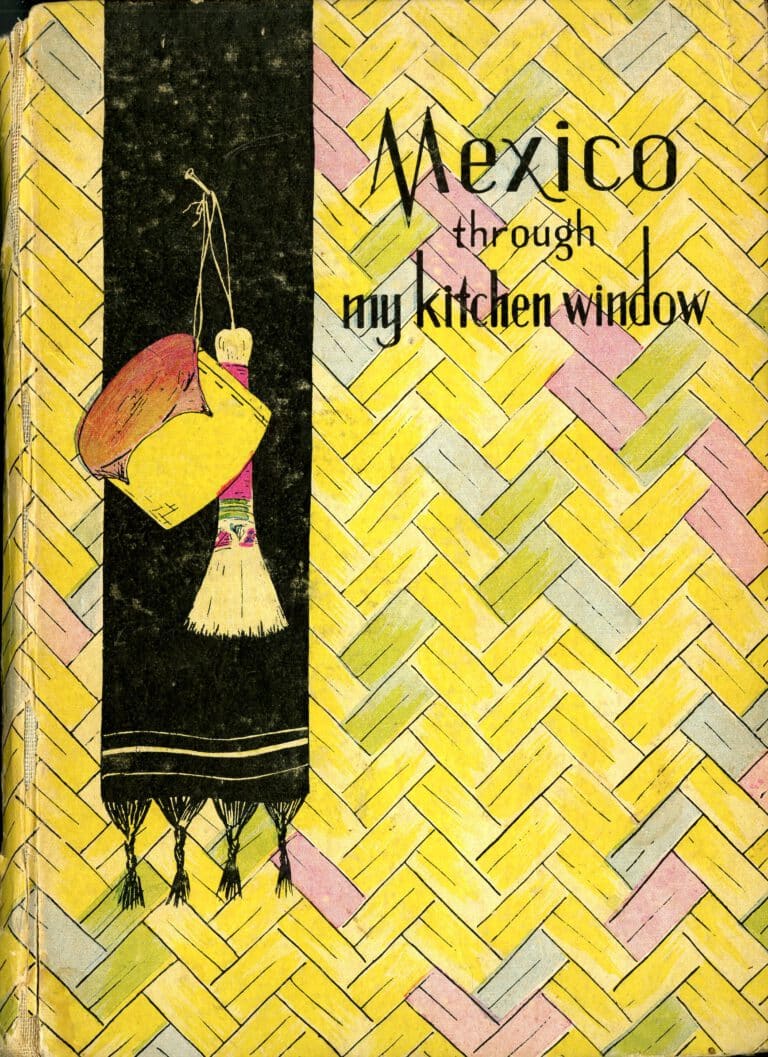

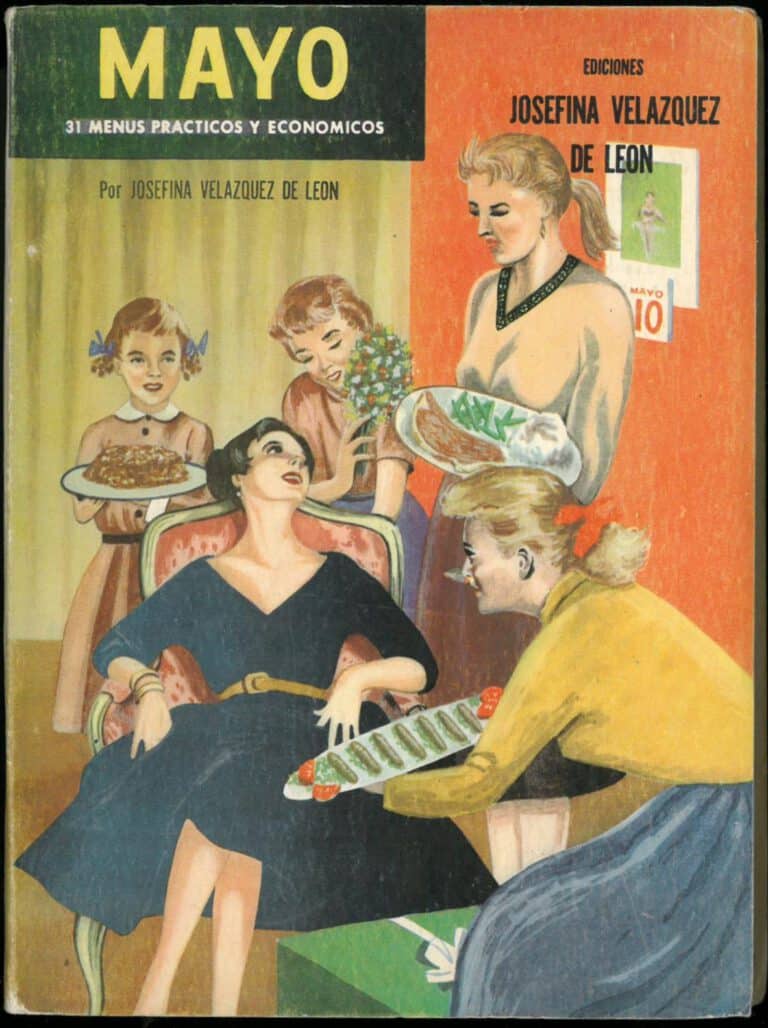
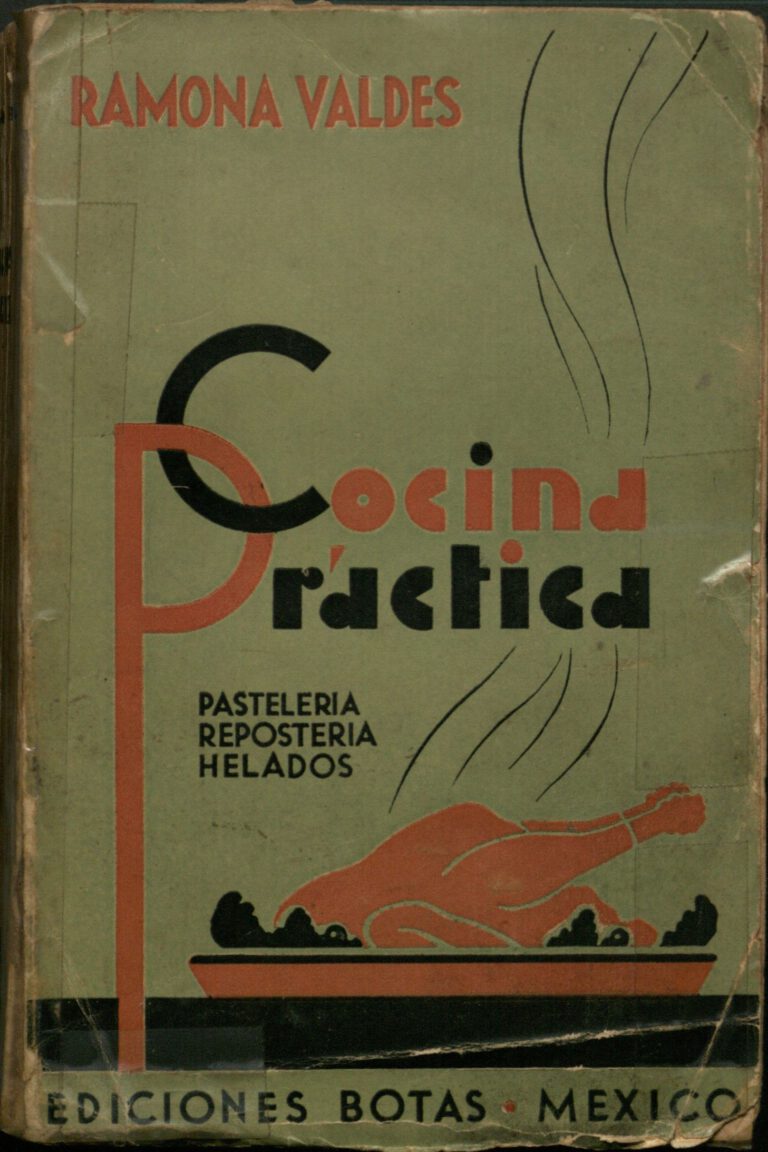
One Comment